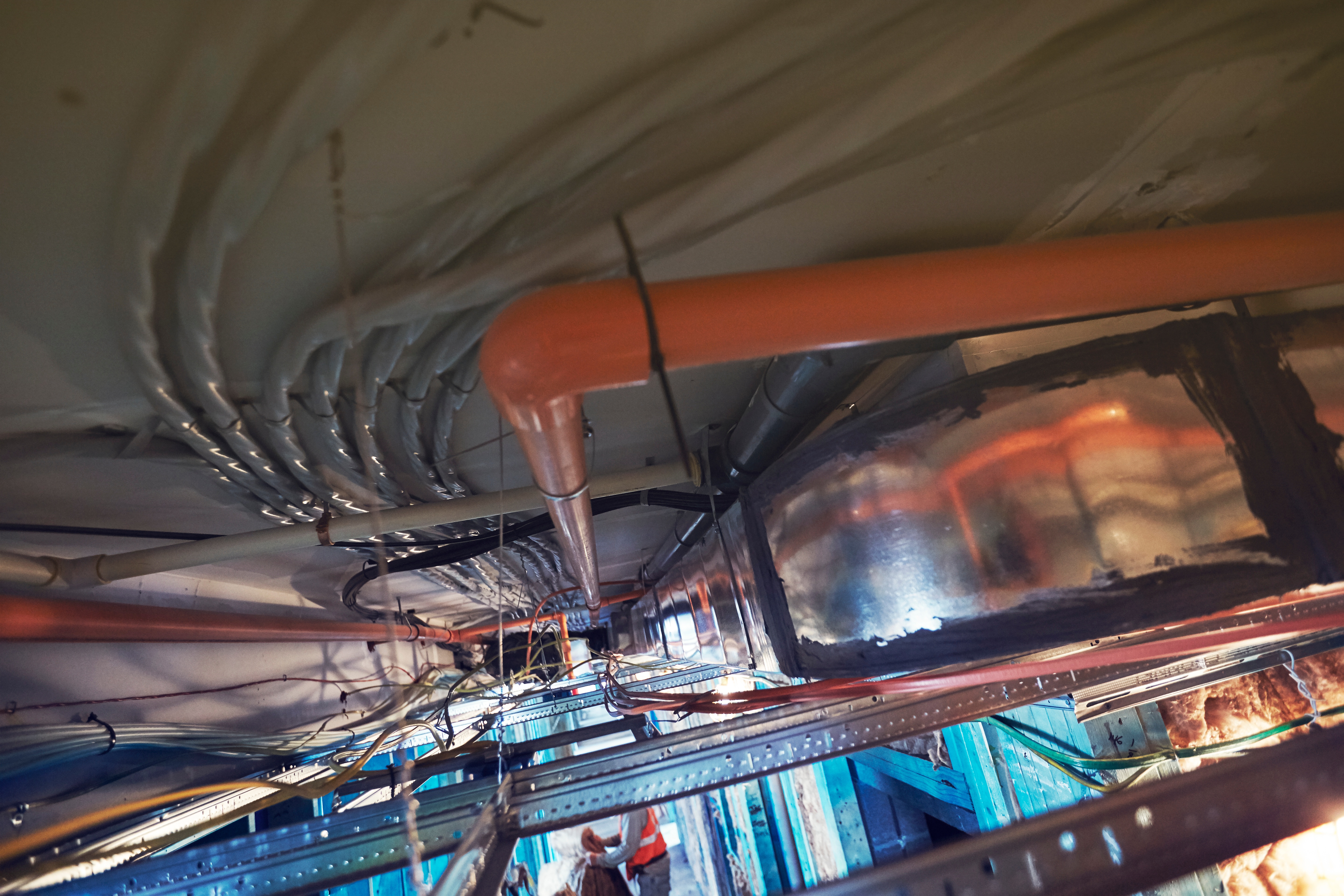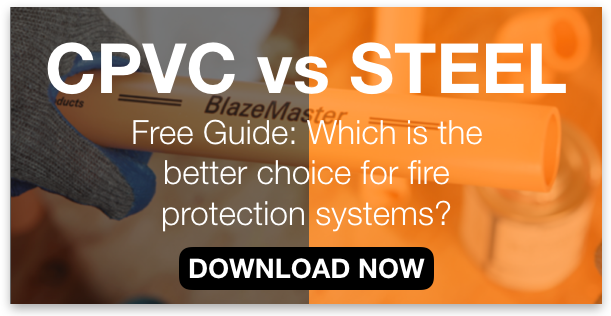Are BlazeMaster® CPVC Fire Protection Systems as Reliable as Steel?
For years, building owners and contractors have relied on steel as the standard material for fire sprinkler systems. After all, steel is strong, durable, and stands up well to intense heat.
But steel is hard to work with─it takes a long time to weld, is often connected by threaded joints which can be messy to make onsite and is prone to corrosion and scaling over time. In addition, retrofitting a building with a steel fire protection system requires displacing occupants and can delay construction timelines.
Fortunately, you have options. Specialized engineering and processing systems have dramatically shifted the capabilities of different materials, specifically plastics. Introduced for fire protection systems in 1984, chlorinated polyvinyl chloride (CPVC) has redefined what can be expected of any fire sprinkler system.
But why trust CPVC over steel for your next new construction or retrofitting project? Our recent guide, “CPVC v. Steel Commercial Fire Protection Systems,” compares the two materials across six key factors. Below, we’ve highlighted three of these factors.
CPVC Saves Money
In our CPVC vs. Steel 2018 Cost Savings Report, we cover how a BlazeMaster® Fire Protection System can save up to 30% in costs as compared to an all-steel solution, depending on the building structure and the amount used. Here’s how:
- CPVC installations are faster and easier to complete, which saves substantial time and resources.
- CPVC’s material costs are lower and more stable than steel’s.
- Compared to steel, CPVC allows for quicker and easier repairs and requires far less continual maintenance, which saves on material and technician costs.
- CPVC piping requires smaller pipe diameters than steel for the same hydraulic flow, which reduces overall material costs.
CPVC is Easier to Install
Steel piping is heavy, rigid, and requires special tools. To maneuver it around a job site, special equipment and two or more installers are needed. It’s often too rigid to maneuver through tight spaces and install in hard-to-reach areas, and installation requires torches and loud threading machines.
In summary, steel fire system installation means more installers, expensive machinery, costly hot-work permits, prefabrication, and vacating occupants from the premises.
CPVC piping, on the other hand, weighs less, is flexible and is joined together using a quick, one-step solvent cement process. Compared to steel, a CPVC fire sprinkler system results in:
- Cleaner, quieter installation.
- Only one installation contractor as opposed to multiple.
- On-the-spot fabrication, even in tight spaces.
- No necessary vacating of building tenants.
CPVC Resists Corrosion
Steel piping systems in any application, including fire sprinkler systems, are susceptible to corrosion. Corrosion degrades the interior of a pipe, which creates more friction along its surface and ultimately slows water flow.
In fact, VdS, a German fire safety firm, found that 73% of dry steel systems have significant corrosion issues at 12.5 years old and 35% of wet systems have significant corrosion issues after 25 years. However, these damages can occur “as soon as two years after installation.”
Steel pipes are also susceptible to scaling, which occurs when dissolved minerals drop out of the water and attach to the pipe wall, often near fittings and corners. As this scaling builds up, it can limit or entirely block water flow.
CPVC resists corrosion and scaling for up to 50 years of service life. When it comes to a long-lasting and reliable fire sprinkler system, CPVC piping is a stronger choice than steel.
Compare Your Fire Sprinkler System Material Options
For a more in-depth comparison of these materials, download our FREE ebook, “Steel vs. CPVC Commercial Fire Protection Guide: Which is the Best Choice for Commercial Fire Protection Systems?”


